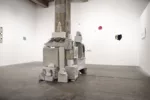When an institution announces the receipt of a big grant for contemporary art programming we want to know more.
Pennsylvania Academy of the Fine Arts Curator of Contemporary Arts Julien Robson snagged a whopping $440,000 grant from the William Penn Foundation for contemporary art programing over the next three years, including support for the Philagrafika exhibit opening January 2009, five solo exhibits of young and emerging artists starting in May in the Morris Gallery, and the exhibit We’re All Still Here, scheduled to open October 2011.
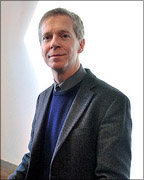
We especially wanted to know who he would be giving those solo and two person shows to so we phoned the curator and grilled him a little bit.
“In April we dismantle the black box [in the Morris Gallery] and start a series of solo and 2 person shows…regional and elsewhere. I don’t want it to be the ghetto where we throw a bone to the local artists,” he said. But he wasn’t naming names yet. “I feel very strongly about creating a context in which regional artists can be seen. I’m not a fan of one show after another after another of artists in the region.”
Unlike the party line art coming out of what he calls “the economic centers” of New York, Los Angeles, Chicago, Robson said there is wonderful art out there in places where artists make unique things. He’d like to give those regional artists the chance to shine.
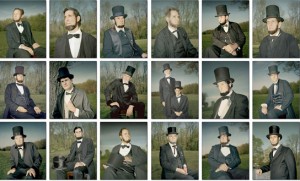
For We’re All Still Here Robson will also be searching for artists outside the big three art cities. He’ll be working with a team of six curators from other regions (also not all selected and also no naming of names) to select a mix of local and national artists whose work exhibits a sense of place. His models are The Old Weird America Show (at the Houston Contemporary Arts Museum and the DeCordova) and Nowhere, a show he himself curated for the Speed Museum in Louisville, Ky., his former gig. That show also traveled to Gratz, Austria. Both shows surveyed what is happening in art all across the country. “We need to recognize that sense of place. …artists working from some sense of where they are, conscious of where they are…that comes out of the Nowhere idea.”
q. Are you anti New York?
a. “No, we’ll be showing some artists from New York. It’s not an anti-New York bias. I’m deliberately trying to complement what’s here already.
“When I say I worked in Louisville most people say it [move to PAFA] must be a step up. I say, What do you mean? It’s not a step up. [Louisville] was a very important scene, a vital art scene. We need to recognize that sense of place.”
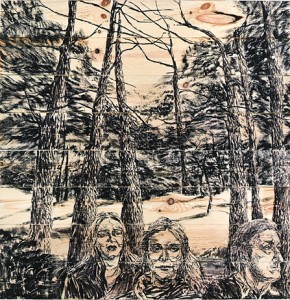
When we asked about how the William Penn Grant will help PAFA commission some new work, he said the money was more on the honorarium level than the full-blown commission level, just seed money. Some will go to artists who are creating new work for the Philagrafika: The Graphic Unconscious exhibit, a seven-artist show that includes Kiki Smith, Pepon Osorio and Mark Bradford. “Things always cost more than you think. But it helps us think how to create even more projects. Money always attracts money.”
q. What about the fall lineup at PAFA?
a. “There will be two kinds of hip–Malcolm [McLaren] and Barkley [Hendricks]. [McLaren’s “Shallow 1-21” will be in the Morris Gallery; Hendricks’ Birth of Cool will be in the Hamilton building.]
“[Barkley’s] work is immensely popular.” He will give a talk in October. And the Academy will be offering many programs, especially for underserved communities. Every Sunday during the exhibit’s run will be free, and the first free Sunday, Hendricks will attend, to mingle and talk to people. Each Sunday will also include special events, with some help from Philadelphia Exhibitions Initiative.
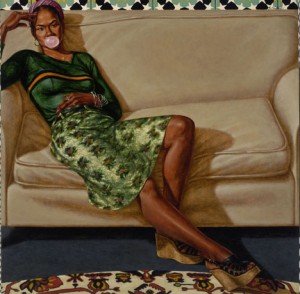
Barkley will take part in a symposium “Evolution of the Cool” on Saturday, Nov. 21. The symposium will include speakers from Duke, Columbia and the University of Pennsylvania, and show curator Trevor Schoonmaker will give a talk in the auditorium on Thursday, Nov. 19.
A number of pieces of work from local collectors will supplement the Hendricks show here (it’s traveling and this is its fourth stop of five). Hendricks, who is PAFA trained, has a big local following. “There were a couple pieces Hendricks was happy about because he lost touch.”
q. And McLaren, the other ultra hip show?
a. “At the end of October McLaren will give a talk [date TBD], and then a week later, he will dj at an event in another venue, with a video element. Malcolm was one of the first to do mixes and scratch music, and had hits in the ’80s and ’90s. [Be sure to check the PAFA website for dates and times since the schedule has changed since we wrote this post.]
Malcolm McLaren, Double Dutch, video, 4:31 from YouTube
McLaren’s video Shallow 1-21 has never been shown in the U.S. in its entirety, and it will be followed by an Indonesian rock video, Tomarama, made with woodcuts. (Tomarama prints are also in the Philagrafika exhibit.) Then down will come the black box to make way for the solo and two-man series of shows.
Meanwhile, Robson says he is trying to differentiate what he shows from what the ICA s the PMA shows. “I have to put restrictions. ICA can do international. We’re an American art museum. That’s what we do, and it will differentiate us.”
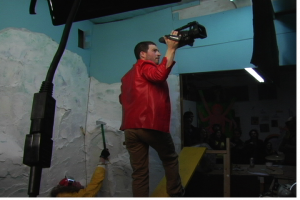
q. Before we let you go, tell us how the PAFA/Fleisher-Ollman collaboration came about for The Summer Shorts video art program, now in the Morris Gallery to Oct. 13. ICA has unjuried local video calls but this is a curated show of local video artists in the museum.
a. “I’d been discussing with Amy … local artists. Amy was able to find these artists…she helped me co-curate that.
“I hope to one day have resources to have a permanent video space. Obviously video is an important medium. it’s important to acknowledge it and it fits the boundaries of PAFA — it extends the figurative tradition. The Philagrafika exhibit is also figurative, and we included alumna Orit Hofshi, so it gives us a sense of looking at our traditions.
“There have been moments when PAFA was revolutionary. We hope to get back to that. I’ve Been talking with [fellow curators] Bob [Cozzolino], Anna Marley, and [Museum Director] David [Brigham]. We are all people who haven’t been here long. We’re all excited.”





